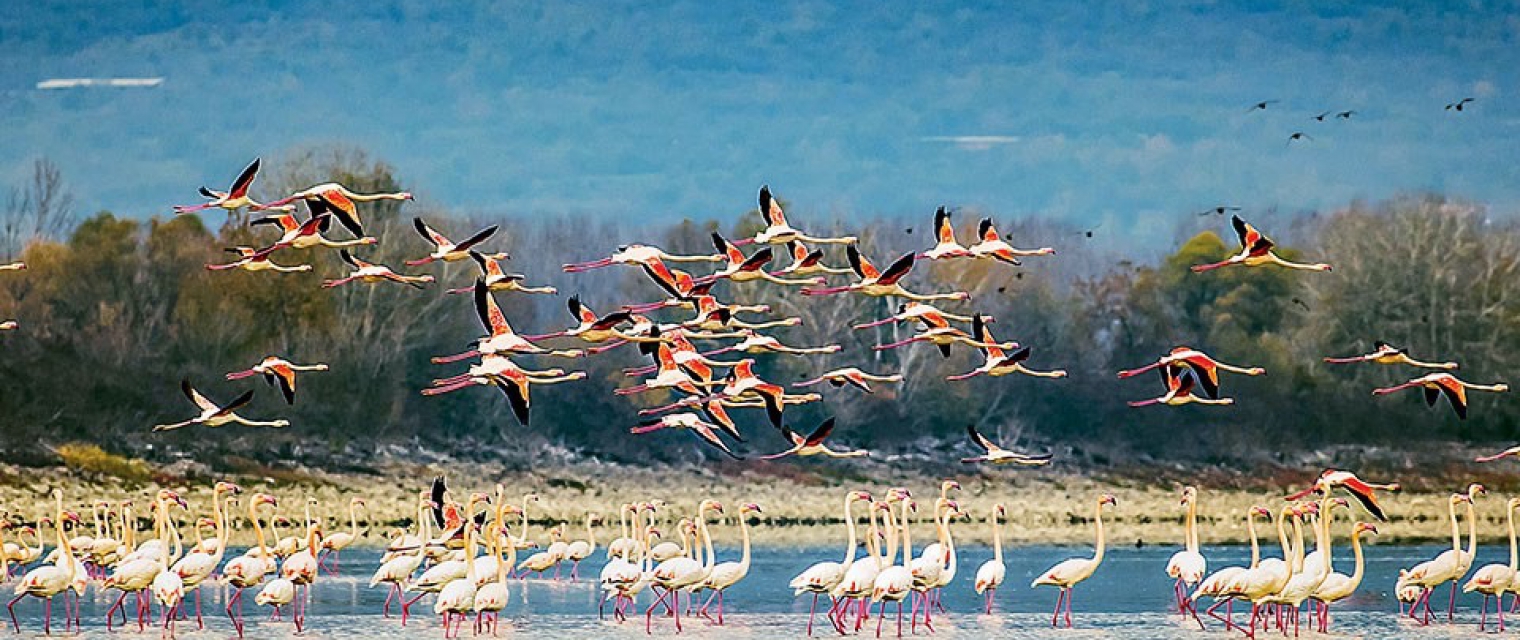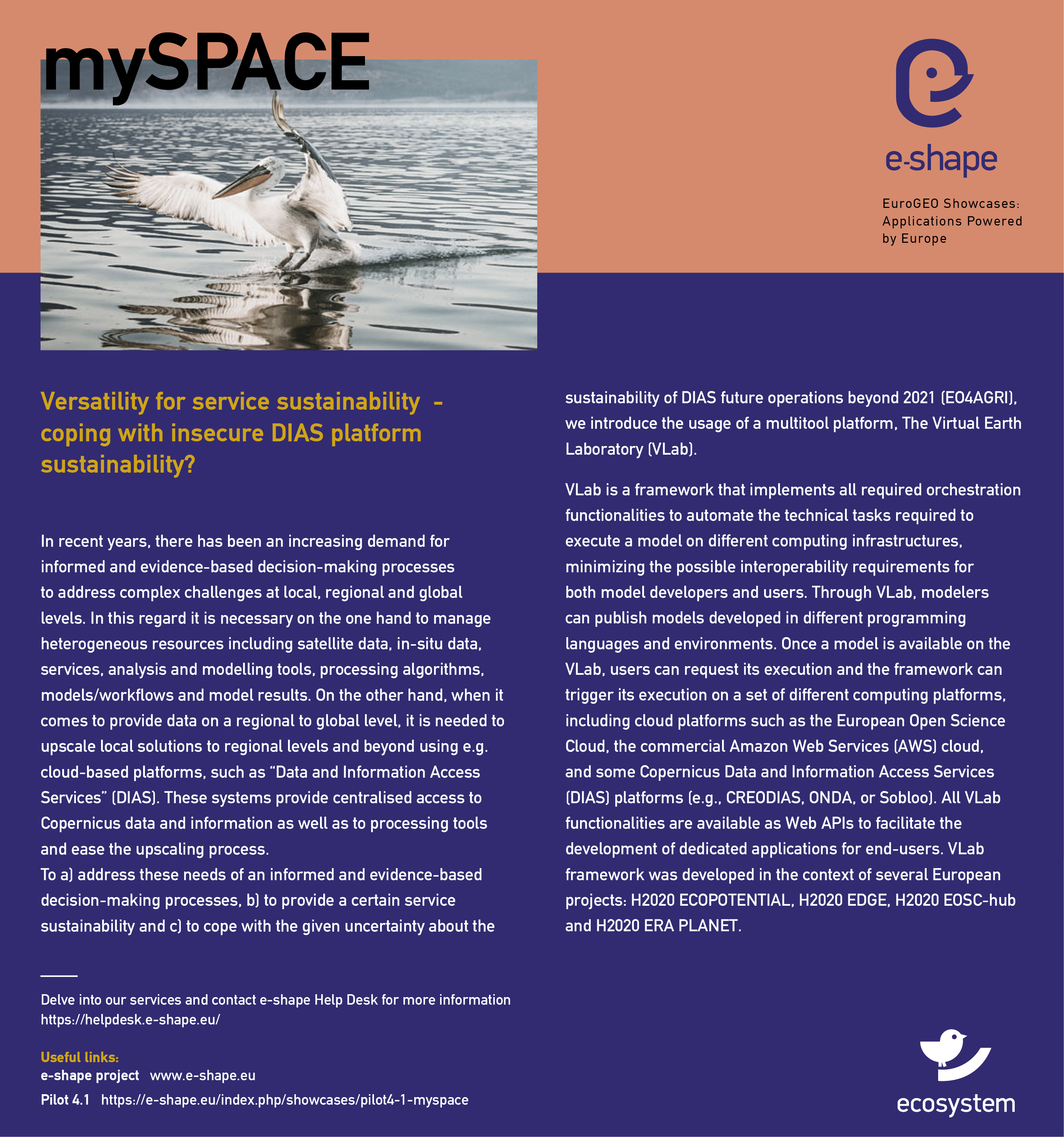Pilot6 | EO-based surveillance of POPs pollution
Pilot 4.1 | mySPACE

In order to secure ecosystem benefits under increasingly anthropogenic pressures , knowledge-based conservation, management and restoration policies are needed. The key to that is data services that encompass effective monitoring (combined Remote sensing RS and insitu) and modelling of the trends and states of the ecosystem and its services. The H2020 ECOPOTENTIAL produced a wide-ranging set of RS variables for an ensemble of 25 Protected Areas (PAs) covering the biogeographical regions of Europe with a focus on arid, mountain, and coastal ecosystems. The selection of variables was co-designed with the PA staff on-site (narratives) that link the ecosystem state and its changes to the drivers of change and to the essential variables to be effectively monitored. MySPACE will extend the approach (workflows and procedures) to quantify current and expected changes in a larger ensemble of sites
/ Objectives
- Provide Remote sensing based information for the management of selected Protected Areas and environmental assessment in benchmark ecosystems (Site Group 1, SG1)
- Rolling out the approach as a larger-scale service for environmental assessment and research at a higher number of sites with full data integration (Site Group 2, SG2) and an even bigger number of sites to achieve European coverage (Site Group 3, SG3)
- Integrate the remote sensing maps and in-situ data of mySITE to produce consistent spatial and temporal variables, e.g. relevant to the extractions of EBV in pilot myVARIABLE for SG1-SG3
/ Partners
CNR, CREAF, CERTH, DELTARES, UBT
/ Key Users
Protected Area Managers, Scientists, Environmental Assessment Agencies, restoration EU policy
/ Key Datasets
(S) NDVI , (S) snow cover data, (AS) Land Surface Temperature, (S) Albedo, (WS) Gross Primary Productivity Proxies, (WAS) Phenological metrics for continental areas, and (W) Sea Surface Temperature, (W) Chlorophyll-a concentrations, (WS) Hydroperiod metrics, (W) Total Suspended Solids (WS), Meteo-climatic data from gridded datasets (e.g., EOBS) and from Copernicus Climate Change Services (C3), Remote sensing (RS) data on ecosystems from Copernicus Marine as well as Land Monitoring Services including RS data from Sentinel and ECOPOTENTIAL repositories, RS data on longer time scales from MODIS and Landsat, in-situ data from the eLTER site network.
/ ID Card
The final output will be remote sensing maps based on ecosystem in-situ measurements and ancillary data (provided by registered protected areas and long-term monitoring sites via the pilot mySITE). These added-value maps (also offered as downstream service) will provide end-users (such as PA managers, researchers, scientists, etc.) comprehensive information of ecosystems to be assessed. The outcome will thus be strengthening earth observation capacity focused on ecosystems which is important for managerial questions during policy and decision making.
Stay in the loop !
Acknowledgment
The e-shape project has received funding from the European Union’s Horizon 2020 research and innovation programme under grant agreement 820852







